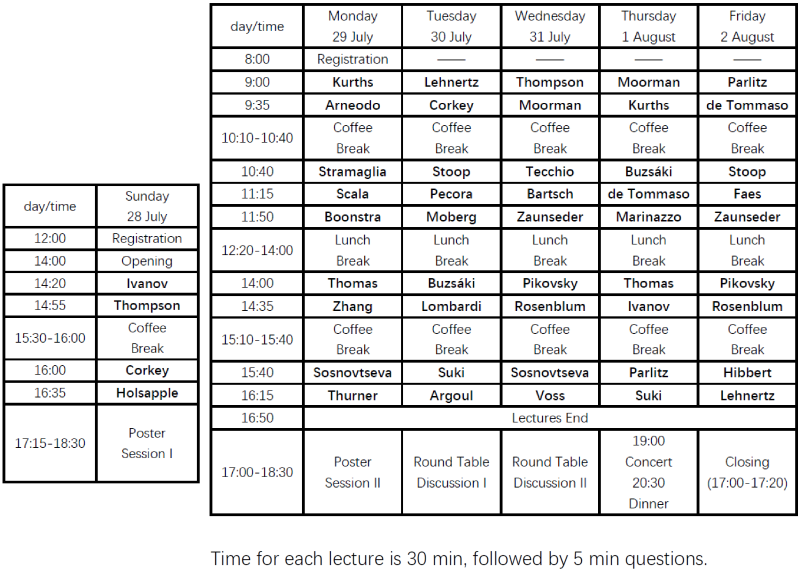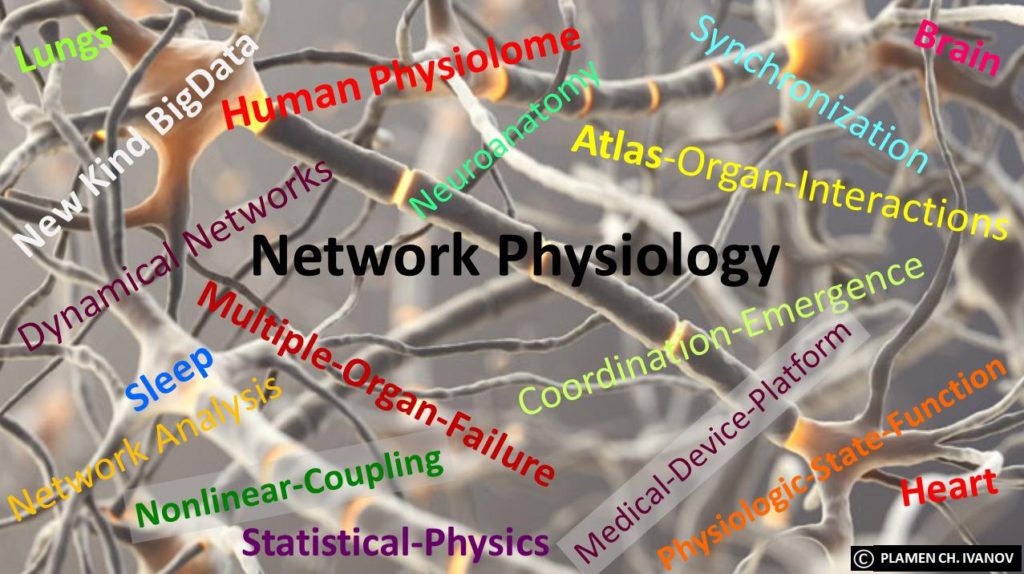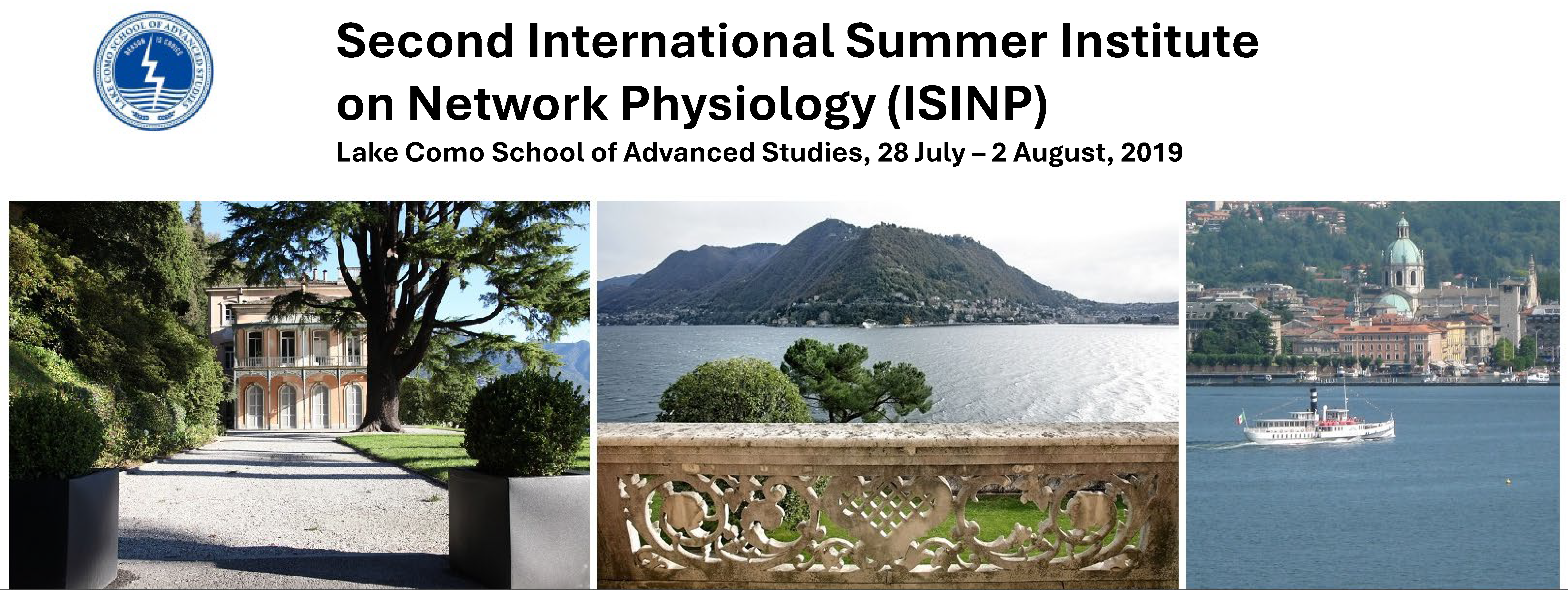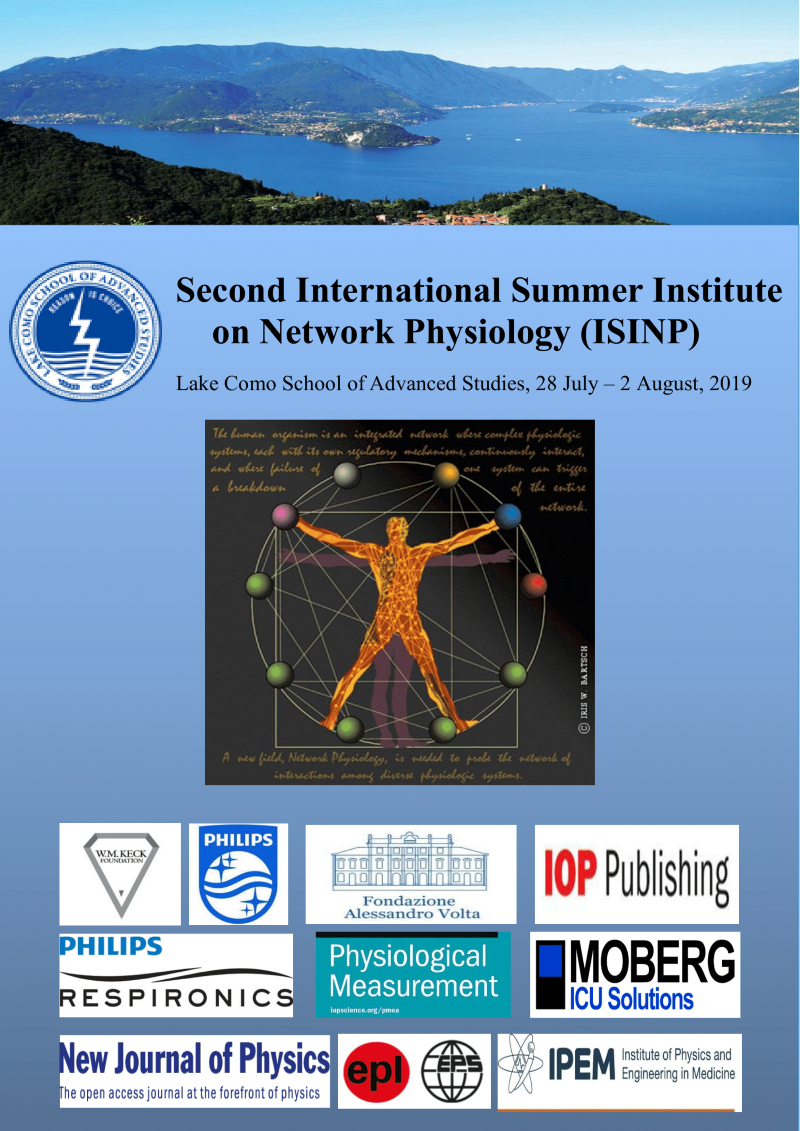Program


SCIENTIFIC PROGRAM
(download here ISINP-2019-Program.pdf)
ISINP-2019 TIME TABLE
(download here ISINP-2019-Time-Table)


LECTURE TITLES
Françoise Argoul
Laboratoire Ondes et Matières d’Aquitaine, University of Bordeaux, France
1. Disentangling cardiogenic and respiratory rhythms from physiological noise in dynamic infrared thermograms: a computer-aided time-frequency method to assist in early breast cancer diagnosis [PDF]
Alain Arneodo
Laboratoire Ondes et Matières d’Aquitaine, University of Bordeaux, France
1. A random network model for living cell plasticity [PDF]
György Buzsáki
Department of Neuroscience, New York University School of Medicine, USA
1. Visualizing network dynamics in cognition [PDF]
2. Preexisting dynamics in the brain networks – constraints and advantages [PDF]
Ronny P. Bartsch
Department of Physics, Bar-Ilan University, Israel
1. Interacting networks of sleep and wake-promoting neurons and their role in triggering arousal from sleep [PDF]
Tjeerd W. Boonstra
Neuroscience Research Australia, University of New South Wales, Australia
1. Functional connectivity in human motor system [PDF]
Barbara Corkey
Department of Medicine, Boston University, USA
1. The redox communication network as a master regulator of metabolism [PDF]
2. Network of glucose-induced signals for insulin secretion [PDF]
Marina de Tommaso
Neurology, Department of Psychiatric and Neurologic Sciences, Bari University, Italy
1. Brain networks interaction in migraine [PDF]
2. Default mode network and functional connectivity in chronic pain syndromes [PDF]
Kathryn A. Hibbert
Department of Pulmonary and Critical Care Medicine, Massachusetts General Hospital, USA
1. Heterogeneity in critical illness: challenges and opportunities [PDF]
James W. Holsapple
Department of Neurological Surgery, Boston University School of Medicine, USA
1. Neurosurgery: a testing ground for Network Physiology [PDF]
Plamen Ch. Ivanov
Keck Laboratory for Network Physiology, Department of Physics, Boston University, USA
1. The new field of Network Physiology: mapping the Human Physiolome
Luca Faes
Department of Engineering, University of Palermo, Italy
1. An information-theoretic framework to dissect multivariate and multiscale physiological interactions [PDF]
Jürgen Kurths
Head of Research Department 4, Potsdam Institute for Climate Impact Research, German
1. Quantifying stability complex networks and its application to neuroscience [PDF]
2. On the difference of cardiorespiratory synchronization and coordination [PDF]
Klaus Lehnertz
Department of Epileptology at Bonn University Medical Center, Germany
1. Limitations on inferring couplings and directionality: Lessons learned from evolving epileptic brain networks [PDF]
2. Estimating resilience of evolving epileptic brain networks. [PDF]
Fabrizio Lombardi
Keck Laboratory for Network Physiology, Department of Physics, Boston University, USA
1. Structure and dynamics of the brain-muscle network across the sleep-wake cycle
Daniele Marinazzo
Department of Data Analysis, Faculty of Psychological and Educational Sciences,
Ghent University, Belgium
1. Synergy and redundancy in the granger causality framework: an application to muscle networks
Dick Moberg
Moberg Research, Inc, USA
1. Developing a Data Collection System for the Injured Brain to Enable Network Physiology Research [PDF]
J. Randall Moorman
Department of Medicine, Physiology, Biomedical Engineering, University of Virginia, USA
1. Network Physiology in adults and infants. [PDF]
2. Network Physiology in adults and infants. [PDF]
Ulrich Parlitz
Max Planck Research Group Biomedical Physics,
Max Planck Institute for Dynamics and Self-Organization, German
1. The nonlinear dynamics of the heart: chaos and synchronization in networks of cardiac cells [PDF]
2. Time series analysis, data assimilation, and machine learning in network physiology [PDF]
Louis M. Pecora
U.S. Naval Research Laboratory, USA
1. An introduction to reservoir computing [PDF]
Arkady S. Pikovsky
Department of Physics and Astronomy, University of Potsdam, Germany
1. Common noise vs coupling in oscillator ensembles [PDF]
2. Network reconstruction from the observations [PDF]
Michael G. Rosenblum
Department of Experimental Therapeutics, Division of Cancer Medicine
MD Anderson Cancer Center, USA
1. Inferring network properties via phase dynamics modeling with application to Network Physiology [PDF]
2. Dynamical disentanglement in analysis of oscillatory systems [PDF]
Antonio Scala
Laboratory of Computational Social Science, Networks Department,
IMT Lucca Institute for Advanced Studies, Italy
1. Network Physiology: a case study in dental medicine and an overview of applications to big data in health [PDF]
Olga Sosnovtseva
Department of Biomedical Sciences, University of Copenhagen, Denmark
1. Kidney function: an interplay between structural network topology and network dynamics [PDF]
2. Network Physiology aspects of kidney-brain-heart interactions and function [PDF]
Ruedi Stoop
Department of Physics & Neuroinformatics, ETH Zurich, Switzerland
1. Critical peripheral neural network physiology explains mammalian pitch perception, frequency dependence of hearing threshold, and harmony vs. disharmony perception of sounds.
2. Novel experimental and theoretical insights into role and modalities of criticality, reveal for small-size neural networks unanticipated complexity bound by universality [talks 1 and 2, PDF]
Sebastiano Stramaglia
Dipartimento Interateneo di Fisica, Università degli Studi di Bari Aldo Moro, Italy
1. Physiological aging in brain networks [PDF]
Béla Suki
Department of Biomedical Engineering, Boston University, USA
1. Cellular shaping of fiber networks: implications for self-healing and pulmonary fibrosis [PDF]
2. Mitochondrial network structure, bioenergetics and blood pressure variability [PDF]
Franca Tecchio
Laboratory of Electrophysiology for Translational Neuroscience,
National Research Council, Italy
1. The simple complexity of the language the ‘Body and Brain’ system uses to communicate with the environment [PDF]
Robert J. Thomas
Harvard Medical School; Division of Pulmonary, Critical Care & Sleep,
Beth Israel Deaconess Medical Center, USA
1. Normal sleep as a multi-component multi-level networked state
2. Pathological sleep as a network disorder [talks 1 and 2, PDF]
B. Taylor Thompson
Department of Medicine, Harvard Medical School and Division of Pulmonary and Critical Care Unit, Massachusetts General Hospital, USA
1. Lung injury begets multiorgan failure and death: lessons learned from the acute respiratory distress syndrome. [PDF]
2. Sepsis and multiple system organ failure. [PDF]
Stefan Thurner
Science of Complex Systems, Medical University of Vienna, Austria
1. Network medicine—what do we learn from co-morbidity networks? [PDF]
Andreas Voss
Psychologisches Institut, Universität Heidelberg, Germany
1. Causal linear and non-linear assessment of central-cardiorespiratory network pathways in healthy subjects in comparison to a neurological disorder under resting conditions [PDF]
Sebastian Zaunseder
Faculty of Information Technology, University of Applied Science and Arts Dortmund, Germany
1. From single biosignal measurement to contactless multimodal physiological measurement technologies [PDF]
2. Approaches to integrated medical technology development [PDF]
Xiyun Zhang
Keck Laboratory for Network Physiology, Department of Physics, Boston University, USA
1. Network physiology and aging: fundamental laws of physiological regulation of organ networks

